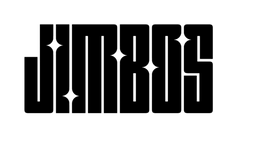Graphene Coatings vs. Ceramic Coatings – Do You Really Need Graphene?
Graphene coatings are everywhere right now. Brands claim they’re stronger, slicker, and longer-lasting than ceramics. But is graphene really better, or just the latest buzzword? Let’s compare graphene vs ceramic coatings so you know which one actually makes sense for your car.
Quick Answer
Ceramic coatings have been the gold standard for years, offering excellent protection, hydrophobicity, and gloss. Graphene coatings add anti-static properties and slight improvements in slickness, but many of the claims are overhyped. For most car owners, a high-quality ceramic like Tough As Shell offers the same — or better — results without the marketing fluff. For a detailed breakdown, see my full Graphene vs Ceramic Coating Comparison.
What is a Ceramic Coating?
A ceramic coating is a liquid polymer that chemically bonds with your car’s clear coat, creating a protective layer. It’s known for:
- Durability: Lasts 1–5 years depending on the product
- Hydrophobicity: Water beads and sheets off easily
- Gloss: Deep, reflective shine
- UV and Chemical Resistance: Protects against fading, bird droppings, and acid rain
What is a Graphene Coating?
Graphene coatings are the newest players on the market. They use graphene oxide, which is claimed to enhance strength and slickness. The advertised benefits include:
- Less water spotting (thanks to anti-static properties)
- Improved slickness
- Better durability than ceramic
But here’s the catch: many “graphene coatings” are still primarily ceramic formulas with trace amounts of graphene oxide. The difference in real-world use is often minimal.
Graphene vs. Ceramic – Side-by-Side
| Feature | Ceramic Coating | Graphene Coating |
|---|---|---|
| Durability | 1–5 years | 1–5 years (claims of longer, rarely proven) |
| Hydrophobicity | Excellent | Excellent |
| Gloss | High-gloss, reflective | Similar gloss |
| Water Spot Resistance | Good, but can spot in heat | Slightly better resistance claimed |
| Cost | Affordable to premium range | Often more expensive for similar results |
Marketing Hype vs Reality
Graphene coatings are marketed as “next-gen,” but much of the performance difference is subtle. Many detailers (myself included) find that a well-formulated ceramic like Tough As Shell matches or exceeds graphene in real-world use.
When to Choose Ceramic
Choose ceramic if you want:
- Proven protection that’s been tested for years
- Great gloss and water beading
- More options across price ranges
When to Try Graphene
Graphene might be worth trying if you’re curious about anti-static properties or live in an area with extreme water spotting issues. Just know that many graphene products are essentially ceramics with added marketing.
My Recommendation
If you’re choosing between the two, you won’t go wrong with ceramic. It’s proven, reliable, and easy to maintain with sprays like Tough As Shell. If you want to explore graphene, manage your expectations and know the differences are often overstated. For more details, check my in-depth Graphene vs Ceramic Coating Comparison.
Protect Your Paint the Smart Way
Skip the hype. For real-world gloss and durability, ceramic spray coatings like Tough As Shell are the smarter choice.
FAQs
Is graphene better than ceramic?
Not necessarily. Both provide great protection. Graphene claims extra durability, but real-world results are very similar.
Why are graphene coatings more expensive?
Mainly marketing. Many are ceramic-based products with small amounts of graphene oxide added.
Does graphene prevent water spots better than ceramic?
Some graphene coatings reduce spotting slightly, but no coating eliminates them completely.
Which lasts longer, ceramic or graphene?
Both typically last 1–5 years depending on product quality, prep, and maintenance.
Related Posts
- Graphene vs Ceramic Coating – Full Comparison
- Cerakote Ceramic Spray Review – How Does It Compare to Tough As Shell?
- The Ultimate Car Wash & Interior Cleaning Guide




